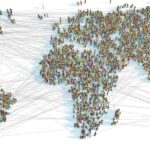
Report: Room for Growth in Online Event Connections
Swapcard’s report finds overall engagement is boosted when attendees and exhibitors connect online, but they don’t always take advantage.
Connecting attendees and exhibitors early improves engagement levels around events, according to a new study, though getting people to take those first steps to connect remains a challenge.
The State of Event Engagement, released last month by the events technology firm Swapcard, is based on data from more than 500 association and nonprofit events using the company’s platform during 2024, encompassing more than 600,000 registered users.
The study found that plenty of networking activity occurs well before the event officially starts: 60 percent of networking happens prior to the event day, 40 percent of exhibitor leads are created in that pre-event period.
Swapcard Product Marketing Manager Jessica Duarte said meeting planners can use that data to make on-the-fly changes to better reflect where and how attendees are engaging. “When 60 percent of networking is happening before the event, planners can utilize that time for a certain number of things,” she said. “What sessions are people most interested in? Do we need to change rooms to accommodate them? Who are the people connecting with the most, in what areas?”
The study found a correlation between activating an account on the event’s app or website and overall engagement with an event. But getting attendees and exhibitors to log in for the first time remains a hurdle. Half of event networking requests go unaccepted, the study found, and more than half of requests from attendees to exhibitors go ignored. That neglect represents “ a critical missed opportunity for exhibitors to engage with interested prospects,” according to the report.
In response to those challenges, the report recommends that meeting planners and exhibitors do more to streamline access to the event’s website, avoiding cumbersome profile creation forms and stressing clearly valuable networking features such as scheduling, networking, event maps, and more.
Half of event networking requests go unaccepted, and more than half of requests from attendees to exhibitors go ignored.
Duarte said that questions asked of attendees should go beyond the basics. “Ask what their areas of interest are, their job titles, so you’re going to feed the algorithm and get people connected,” she said. Moreover, attaching promotions such as giveaways to accessing online tools can help. “It’s about getting them to that first step where they can start seeing notifications come in,” she said.
That is potentially an area where AI can assist: According to the report, there was a 45 percent year-over-year increase in the acceptance rate for AI-generated networking requests, suggesting that AI tools are becoming more reliable at creating valuable connections. “AI-powered connection recommendations increase acceptance rates by 55% compared to recommendations made without AI,” the report said.
The report also suggests that exhibitors can do more to improve their potential engagements with attendees: Only about 30 percent of exhibitors complete more than 40 percent of their booth listings and less than 10 percent download a final lead report within 90 days of the event. “ Exhibitors need guidance on optimizing virtual booths and responding promptly to connections, while attendees should be encouraged to complete detailed profiles and engage with pre-event content to maximize their networking success,” the report said.






Comments